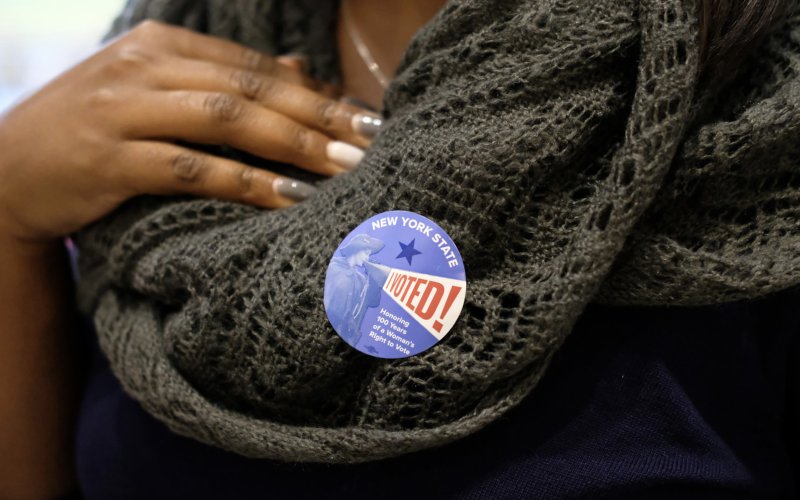CTG UAlbany Study Examines U.S. Voter Registration Practices

ALBANY, N.Y. (March 24, 2022) – In the history of U.S. elections, the 2000 President Election stands alone not only for the razor-thin margin of victory of George W. Bush, but also for the numerous issues flagged with voting systems and voter access in the state of Florida and throughout the country.
As a result, the United States Congress passed the Help America Vote Act (HAVA) of 2002 to make sweeping reforms to the nation’s voting process. In New York, this led to the retirement of lever voting machines that had been in place for more than 50 years, and the introduction of new technologies to govern voter registration and election processes.
Recognizing the continuously evolving environment of voter registration, the New York State Board of Elections (SBOE) reached out to the Center for Technology in Government at the University at Albany (CTG UAlbany) to lead an exploration of management, technology and legal environments that shape voter registration in both NYS and across the United States in order to inform their future statewide investments.
“It’s important for us as an agency to continue to invest in a range of current practice research initiatives that includes learning how other states are addressing voter registration security and resiliency challenges. Our partnership with CTG gave us greater insights into whether these investments have yielded desired change,” said Todd Valentine, Co-Director of the NYS Board of Elections.
In order to carry out the project, CTG UAlbany brought together a multi-sector and interdisciplinary team consisting of the Government Law Center (GLC) at Albany Law School, International Data Corporation (IDC) and the Nelson A. Rockefeller College of Public Affairs and Policy.
Led by CTG UAlbany’s Program Director, Meghan Cook, the team conducted six parallel investigations into:
- Clarifying Voter Registration Designations and Identifying Voter Registration Components and Alternatives
- Examining How Federal and State Laws Shape Voter Registration in New York State
- Understanding Voter Registration Practices Across the U.S.
- Modeling Voter Registration Processes in New York State counties
- Testing the Security and Resiliency of Voter Registration Alternatives
- Understanding the Security and Resiliency of Voter Registration in New York State counties
“This project exemplifies the great working partnership between the University at Albany and Albany Law School,” said Ava Ayers, Associate Professor of Law at Albany Law School. “The team at the Government Law Center was able to work alongside researchers at CTG UAlbany and NYS Board of Elections to conduct a critical legal analysis of how information technology is prescribed in voter registration and the flexibility of federal and state election laws to adapt to any changes.”
Through the six investigations, the team identified 10 findings that provide insights into the technical, legal, policy, and management aspects of voter registration in the United States. The findings range from a clearer understanding of the factors that influence a state’s voter registration approach such as software, hosting, and where data management practices are carried out. Other findings include insights into how the dynamic vendor community impacts long term sustainability and support.
“IDC works with governments throughout the world to digitally transform operations and services,” said Ruthbea Yesner, IDC Inc’s Vice President for Government Insights. “In this project we were eager to work with CTG UAlbany and the NYS Board of Elections so that we could leverage our knowledge and expertise in voter registration and elections infrastructure and provide value to NYS’s leaders as they consider investments in their state’s voter registration approach.”
The multi-sector team, led by CTG UAlbany team also produced two recommendations for the State Board to consider 1) build election leaders’ awareness and understanding of emerging technology environment and 2) establish and convene a formal state-local elections information technology advisory body to inform a range of investments. The recommendations are based on the findings as well as insights from the many election experts interviewed in this project.
“As technologies advance and voter registration practices evolve, it is important for the State Board to continue to consider voter registration from a strategic standpoint.” Kristen Zebrowski Stavisky, Co-Director of the NYS Board of Elections said. “Projects like this provide our leadership team with analysis, insights, and recommendations so that we can continue to consider and reflect on a range of investment options in voter registration.”
The findings and recommendation report, found on the CTG UAlbany website, is entitled “Envisioning an Elections Future: Exploring the Technology, Policy, Management and Legal Environments in Voter Registration.”




